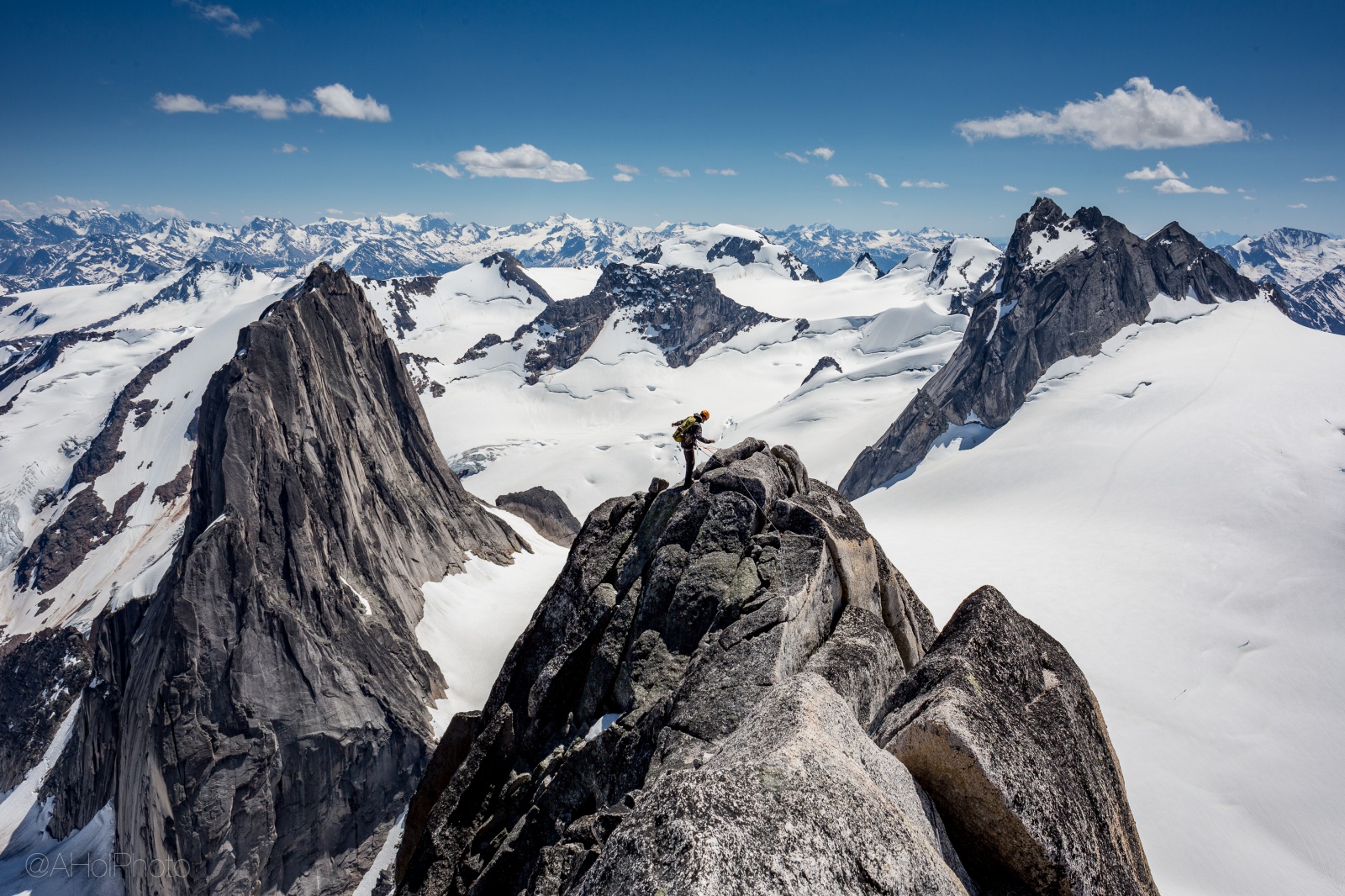
Newest Posts
Want to learn some #CraftyRopeTricks for using trees as climbing anchors? This deep-dive series on tree anchors covers general principles, and rigging systems for rappel, top rope, and multi pitch climbing.
Five more quick tips on best practices. In this article: Best place to put your pulley in a hauling system, how to rack pickets, why it's good to have waypoints rather than just a track on your GPS, minimizing cluster at big wall anchors, and why it's good to stand away from the cliff when you pull your rappel rope.
Can we improve single pitch “clip and lower” anchors? This anchor ticks all the boxes for low cost, simplicity, security, longevity, and more. See all the details, variations, and cost breakdown here.
Part of a continuing series of looking at strength of anchors, gear, and knots. How strong is a belay loop? How about a rope after you stomp on it with a crampon? Can I trust that rappel anchor made with old, sun bleached webbing? Learn the answers to these and more.
The 2:1 haul is a fundamental system in rope rescue. If you use a progress capture pulley, there are two places you can put it: on the load, and on the anchor. There are pros and cons to each; learn ‘em here.
When lowering off and cleaning an overhanging route, you may have a problem at the bottom quick draw. If you unclip that and let go, you're probably gonna take a big swing, which may be into something dangerous. Here are two techniques to solve this problem.
Hauling isn't just for big walls; pulling up your pack on a small diameter cord can be a lot nicer than having it on your back. Here's a great way to set up an ergonomic hauling system that's simple, fast, and lets you lift with your legs, not your arms.
Being able to see in real time on your phone if you’re on public lands or not is helpful for all kinds of things, especially finding free dispersed camping spots. Here’s how to use some modern mapping tools like Caltopo and Gaia GPS to do this.
Do you have a 3:1 hauling system set up, and need a little extra pulling power? Here's a simple way to turn it into a 5:1 with minimal extra gear.
Five bite sized, quick tips of best practices. In this post: 1) “boosting” a low anchor, 2) rope pull tip for a traversing rappel, 3) how a redirect increases anchor loading, 4) why you don't need an overhand knot on a tied loop anchor, and 5) how to set up a lower with a Grigri.
Expert American alpinist Colin Haley is known for a few things: an expertise for routes in Patagonia, and a tremendous obsession with climbing gear. Check out this great video interview where he offers a free ranging commentary on equipment he’s designed, customized, and uses regularly.
So how strong is the girth hitch master point? How about if one strand gets cut? Can you girth hitch a sling to a carabiner (and survive?) Here's an overview of various flavors of anchor rigging, and links to actual break testing.
We've all wondered - how strong is it? The Alpinesavvy web gnomes scoured the web to find some break testing for common (and not so common) gear, knots and rigging. Start here for an overview, and then head over to the more detailed articles.
Five more quick tips on best practices. This post covers: 1) When to untie your rappel stopper knot, 2) the proper direction for a Grigri when belaying from the anchor, 3) how not to carry your satcom device, 4) how to shorten a sewn loop daisy chain, and 5) why to keep your anchor low on a tree.
A double loop bowline on a bight is a good starting point for various types of anchors. Here's one application, the “fisheye”. Make a three-piece anchor with a 120 cm sling? Yep! Learn all about it here.
It's easy to get crosseyed looking at a pulley system and trying to figure out the mechanical advantage. Fortunately, there's an easy way to calculate it, requiring the math skills of a third grader. (Yes, you can do this.) Let’s learn the “T method.”
At some point, all climbers will have to rappel down an unknown route. Here are some solid tips to hopefully get you down in one piece, without creating too many (epic) stories to tell later.
Five more quick tips on best practices, with links to my detailed articles. This post covers: 1) rappel anchor backups, 2) route hardware bolting tips (stainless steel!), 3) using “rack pack” carabiners, 4) a crafty Klemheist hitch variation, and 5) how to rack an adjustable tether so it won’t trip you up.
Aid climbing requires lots of fixed rope ascending. The traditional way to do this is using your ”lead” ladders. However, an adjustable, comfortable and lightweight stirrup is a superior tool.
A basic guideline for anchor building: narrow angles are good, wide angles are bad. While that’s generally true, it turns out in some cases, a very narrow angle is not so good for load sharing. Check out a recent article and video by Over the Edge Rescue on this. (Warning: anchor nerds only.)
In most rappels, getting the rope down is pretty straightforward: give each strand a toss and hope for the best. However, challenging terrain and conditions may require some specialized techniques. Here are a few.
Quick tips on best practices, with links to my detailed articles. This post covers: anchor shelf on a tree, “casting” (not throwing) a rappel rope, block leading tip, proper tails on flat overhand knots, and a caution on girth hitched rappel rings. (Premium Members can read all of ‘em.)
Tool tethers prevent the gigantic problem of dropping an ice tool on a long alpine route. The commercial ones work fine; however they can be a bit expensive. Here's a way to make your own.
Want to boost the strength of your rigging? Simply doubling the strands into a basket hitch can dramatically increase the strength, which could be helpful in some situations. See the test results here.
A series of quick tips on best practices, with links to my detailed articles. This post covers: quad anchor tips, pre threading your haul pulley, the twist-free Munter rappel, how to cut webbing, and a caution on ‘open” slings. (Premium Members can read all of ‘em.)
Don't you love it when your cold hands feel like there's 100 needles in each one, and to top it off, you feel like throwing up? Nah, me neither. But that's a pretty good description of the aptly named cold weather ailment, the “screaming barfies”. Learn what causes it and how to (maybe) prevent it.
As ice climbing season winds down, it becomes more important to consider environmental conditions as potential hazards. Here are five of them. Guest post from IFMGA Guide Kel Rossiter.
Retreat (aka bail) anchors or not something you hopefully do very often. But when you need to, there are some specific requirements. See examples of strong and simple rigging here.
Retreat (aka bail) anchors need to be strong enough for a rappel, use a minimum of gear and cordage, and be simple to rig. Learn the principles here.






























A 1:1 haul is the big wall standard for moving up your vertical camping supplies. But when it starts to be close (or even a bit more) than your bodyweight, it can be very hard to lift. Here’s a #CraftyRopeTrick that let’s you haul extra-heavy bags 1:1.
Premium Article available